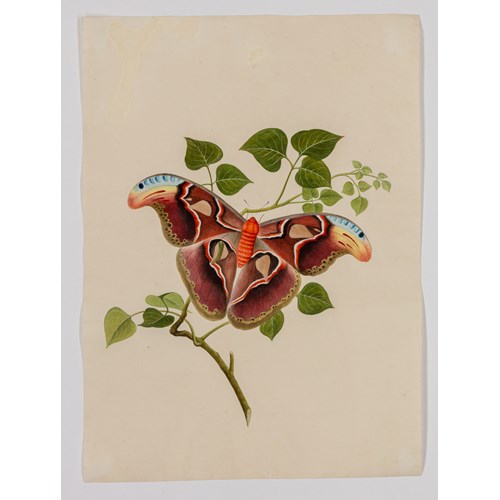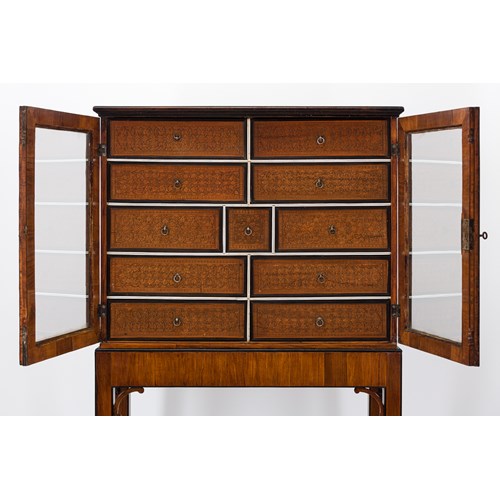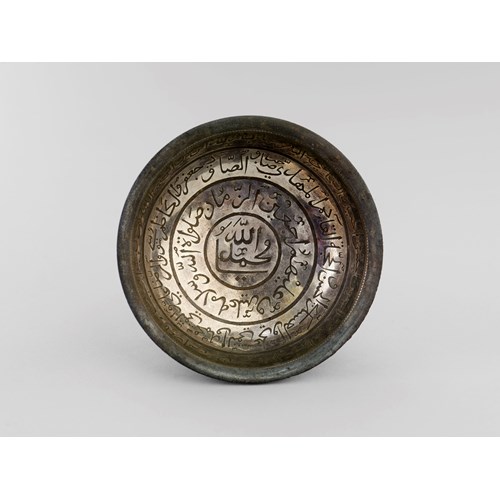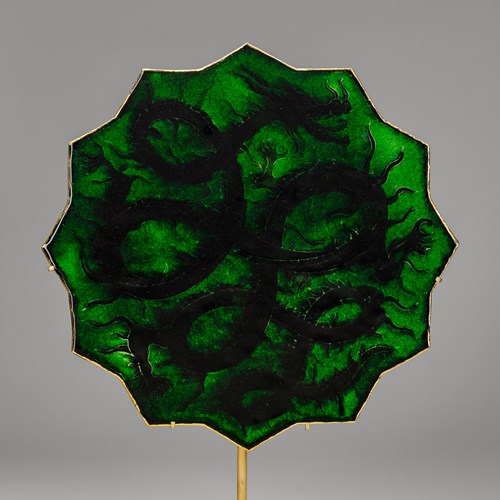Marketplace
A MING BLUE-AND-WHITE EWER WITH XUANDE MARK 明宣德款青花缠枝莲纹执壶
A MING BLUE-AND-WHITE EWER WITH XUANDE MARK 明宣德款青花缠枝莲纹执壶
Epoque 15th – early 16th century
Origine China
Medium Ceramic with underglaze monochrome decoration
Dimension 24 x 14 cm (9¹/₂ x 5¹/₂ inches)
This ewer has a globular body, tall flaring neck, splayed foot, elongated handle, and curved spout with strut. It has a decorative scheme that is divided into several bands. To the top of the neck are two bands painted with clouds, followed by a band of foliate scroll design. Between the neck and body is a wide band consisting of flying phoenixes amongst clouds, followed by a thin band of chrysanthemum scrolls. The main body contains a wide register of baoxiang flower design, followed by a band of pseudo writing. At the splayed foot is another band of chrysanthemum scrolls. The elongated, slender handle and spout are decorated with fire motifs. The base bears a mark which reads “made in Xuande reign of Ming dynasty (Daming Xuande Nian Zao).”
Chinese porcelain were highly sought-after commodities in the Islamic world and the West from the fifteenth century onwards. The term “export porcelain” refers to the group of ceramics that were made in China especially for export, many of which were tailored in shapes to suit the designated usage at their respective destination markets. The shape of this ewer was modelled on Islamic metalware, and would have been produced for export to the Islamic and Indian market. A comparative example at the Gardiner Museum, Toronto has the same shape as our ewer. It bears the same Xuande mark as our example, and is dated to the late 15th – early 16th century.
Comparative material:
The Gardiner Museum, Toronto (G99.1.1)
中国,明朝,15——16世纪早期
高24厘米,直径14厘米
Stock No.: A4108
Chinese porcelain were highly sought-after commodities in the Islamic world and the West from the fifteenth century onwards. The term “export porcelain” refers to the group of ceramics that were made in China especially for export, many of which were tailored in shapes to suit the designated usage at their respective destination markets. The shape of this ewer was modelled on Islamic metalware, and would have been produced for export to the Islamic and Indian market. A comparative example at the Gardiner Museum, Toronto has the same shape as our ewer. It bears the same Xuande mark as our example, and is dated to the late 15th – early 16th century.
Comparative material:
The Gardiner Museum, Toronto (G99.1.1)
中国,明朝,15——16世纪早期
高24厘米,直径14厘米
Stock No.: A4108
Epoque: 15th – early 16th century
Origine: China
Medium: Ceramic with underglaze monochrome decoration
Dimension: 24 x 14 cm (9¹/₂ x 5¹/₂ inches)
Plus d'œuvres d'art de la Galerie









